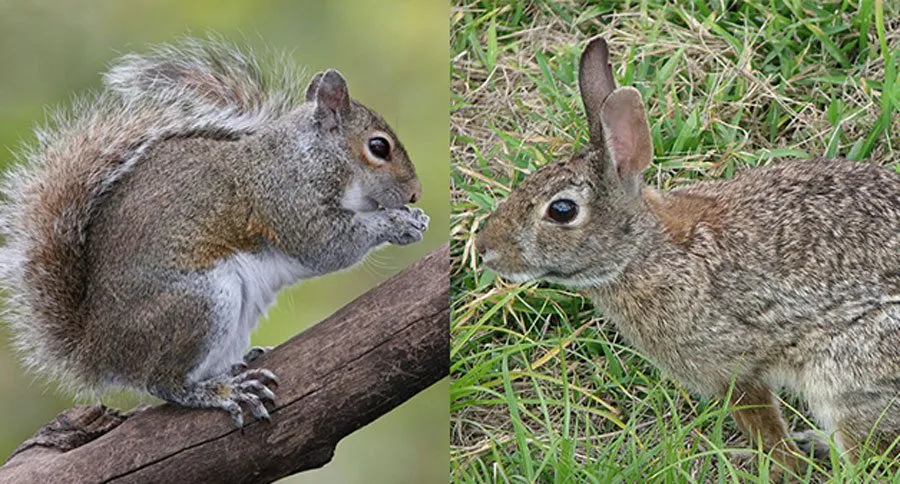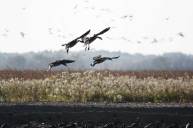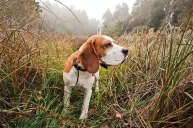Telling squirrel tracks from rabbit tracks can be tricky. But here are a few pointers to help you tell one from the other with confidence.
If you're like me, you love to hunt small game when there's snow on the ground. More specifically, I love to hunt once autumn squirrel season starts to wind down a bit and the focus shifts to rabbits. Few things excite me as much as finding a set of rabbit tracks in fresh snow when I have a shotgun in my hands.
When I was a less-experienced youngster, I had some trouble differentiating between squirrel and rabbit tracks. Following what I assumed was a rabbit, I would be semi-frustrated when those tracks ended at the base of a tree.
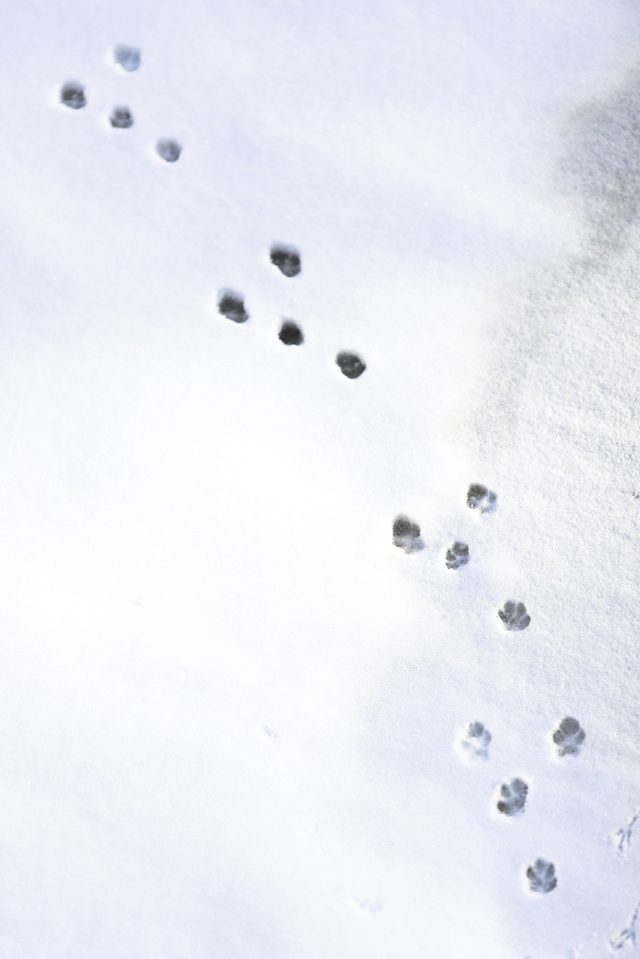
These are rabbit tracks. cuteness.com
I quickly made it my mission to learn how to identify each. It didn't take long, and my study of tracking books and in-the-field observation of these small-game animals yielded dividends. That knowledge ultimately transferred to my big-game hunting over the years. Here are a few tips to help you tell which critter made which track.
First of all, fresh snow is obviously the best environment we can have to study tracks. Small animals like squirrels and rabbits do leave tracks on bare ground occasionally, but conditions have to be just right for you to see them.
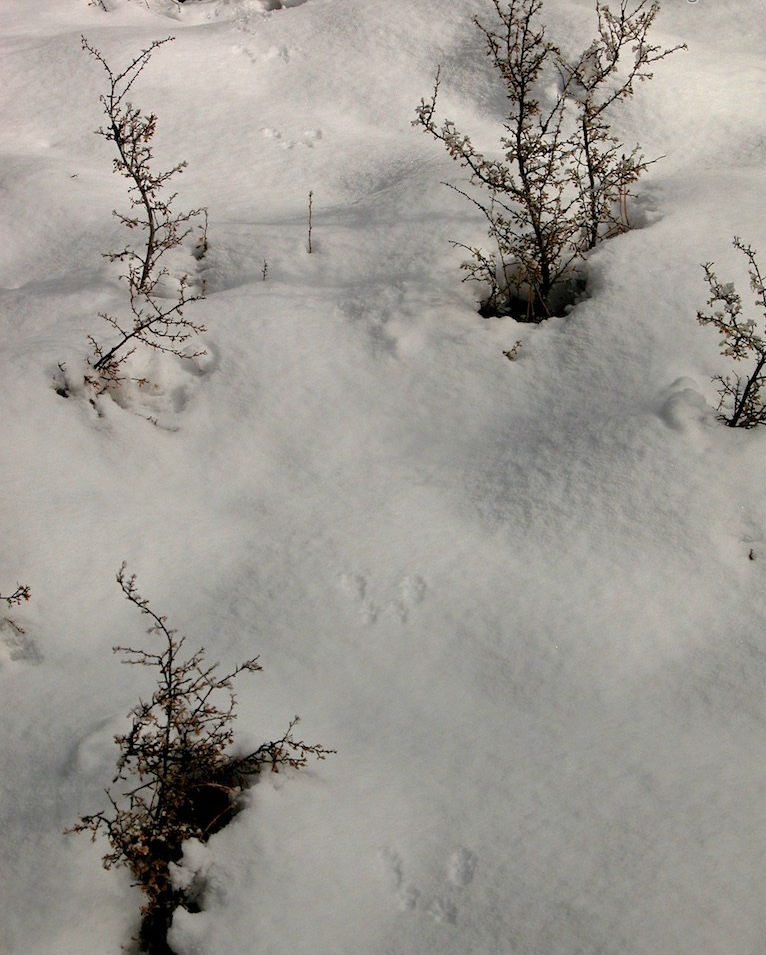
These are Squirrel tracks. Notice the boxy pattern, with the smaller front feet side by side. NatureTracking
One thing I learned was to look at the bigger picture rather than simply examining a single set of tracks. For example, when you do come across a track, stand up and view the larger area where the tracks lie. Look at the direction of the tracks, where they end up if possible, and their general pattern of motion.
You can often tell not only what animal made the tracks, but also the critter's reason for traveling (are they simply moving from point A to point B, or are they actively feeding). Rabbits will often stop along the way to nibble if there's low hanging brush in their path. You can sometimes see their larger body imprint where they've stopped if the snow is good for it.
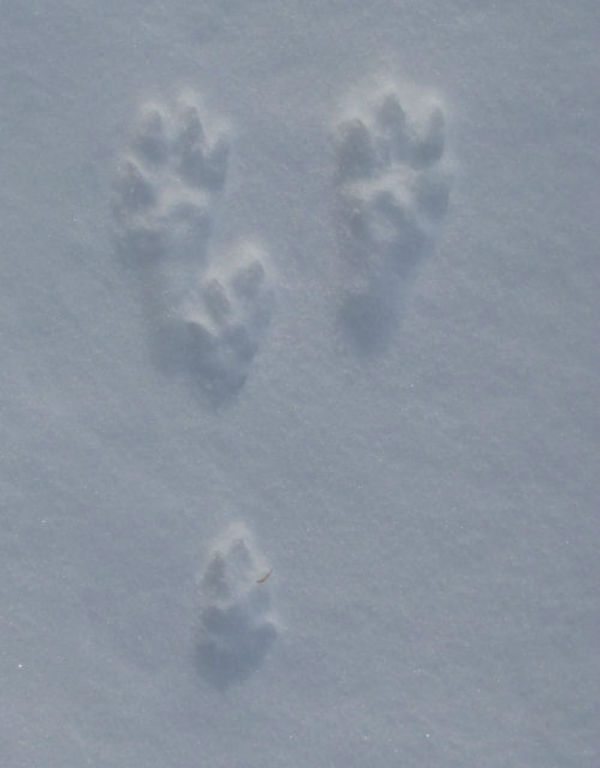
Here are more rabbit tracks. Notice the staggered placement of the smaller front feet behind the larger rear feet. sharkenterprises.biz
Squirrels, on the other hand, are diggers that'll often show signs of where they've ducked underneath the snow and dug for buried nuts. How the snow is disturbed should give you a clue as to whether or not the animal is feeding or simply traveling from one area to another.
Squirrels are wanderers in comparison to rabbits. Their movement always seems skittish, full of fits and starts as they constantly search for food and peer around for danger.
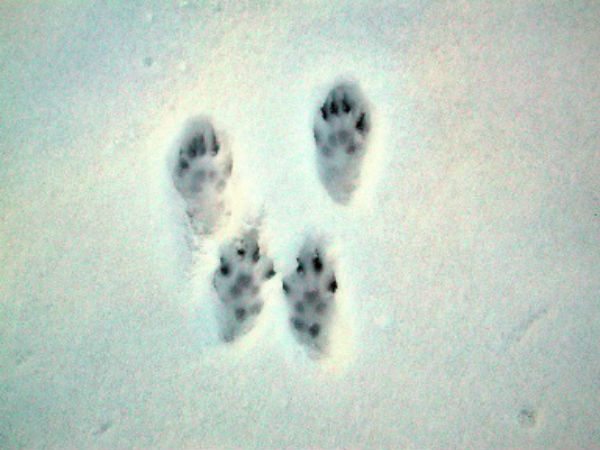
These are squirrel tracks. Notice the side-by-side, front-foot placement behind the larger rear feet, and the five toes on the rear feet. Michigan DNR
Rabbits appear to move more deliberately, to the point where it's almost casual. Both critters tend to cover a lot of territory, but both will also use well-worn trails, especially rabbits. If that trail appears to move along the ground before heading into brushy cover, chances are it's a rabbit (though not always). Contrarily, if the trail stops at a fallen log or tree and appears again on the other side, it's a squirrel.
Both rabbits and squirrels tend to bound when moving directly from one location to another. The distance between sets of tracks can be telling. Squirrels, when they're moving to simply get from one point to another, will run with bounding leaps of generally 2-4 feet. Rabbits usually hop with roughly 2 feet between each set of prints.
Check the path for scat, too. Rabbit scat is round and often found in profusion. Squirrel scat is less obvious. Droppings are shaped like TicTacs, usually featuring one pointed end and often found on logs or stumps where they feed.

This is rabbit scat. tutordoctorofwny.wordpress.com
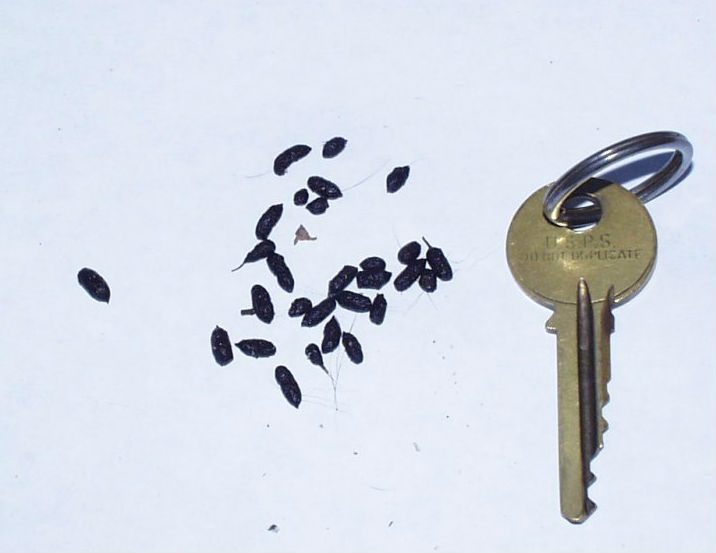
This is squirrel scat. unexco.com
That's another tell-tale sign, too. If you find the husk of a nut or pine cone, it's a squirrel. Rabbits may leave some lighter leaf or twig detritus where they've stopped to munch.
Looking at the track sets, you will notice that both critters tend to place their larger hind feet in front of their smaller front feet as they travel. This is what makes identifying them a little tricky. So, there will be two large feet in front of two smaller feet. But, one thing that sets them apart is that rabbits tend to stagger their rearward front feet.

Here are rabbit tracks, moving from left to right. NatureTracking
Squirrels, on the other hand, tend to place their smaller front feet side by side in the set, though still behind the larger rear feet.
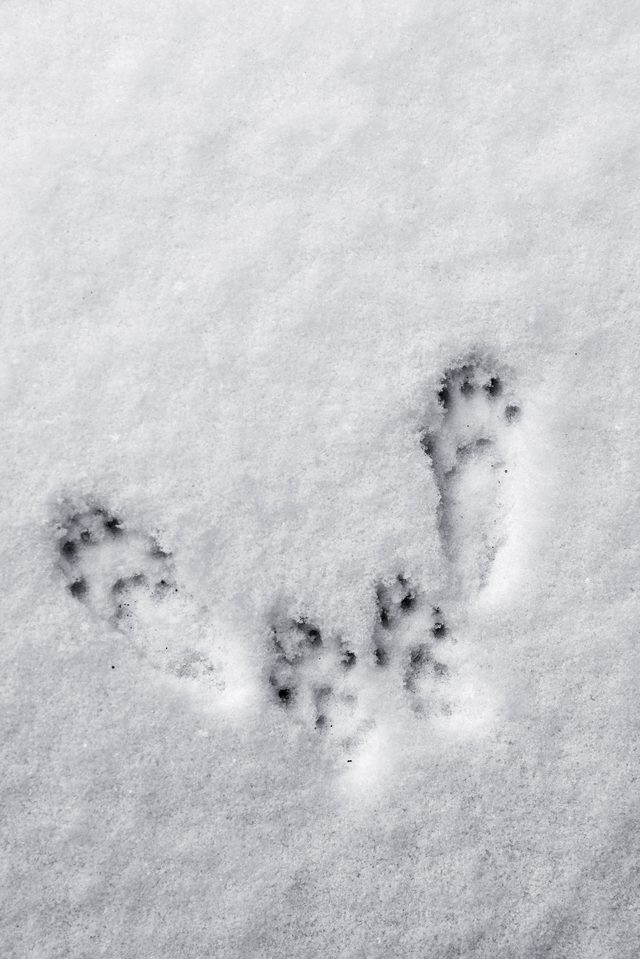
These are squirrel tracks. cuteness.com
And finally, if conditions are just right and you can make out the individual toes in the tracks, you can clearly identify which animal made it. The larger back feet of rabbits (which, again, will be located in front of the smaller front feet as the rabbit hops) will show four toes. The sides of the track will be slightly indistinct as well, due to the rabbit's fur-covered feet.
The larger rear feet of a squirrel will show five toes.
There are few hard and fast rules for tracking animals, and sometimes conditions just aren't conducive to cleanly identifying what animal made what track. But, as with most things, the more you practice your tracking and identification skills, the better and more confident you will become at it.
It's a great way to increase your observational skills, as well as the fun you have when in the field.
Like what you see here? You can read more great articles by David Smith at his Facebook page, Stumpjack Outdoors.
NEXT: FLINT KNAPPING THE BEST SMALL GAME ARROWHEADS
https://rumble.com/embed/u7gve.v3tp7h/
